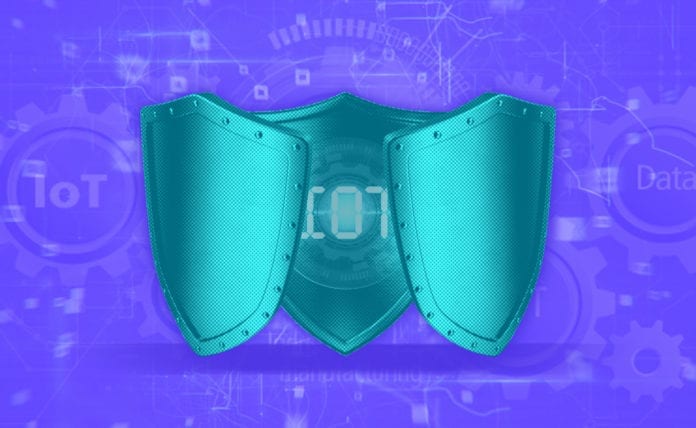AI progress depends on us using less data, not more

The data science community’s tendency to aim for data-“insatiable” and
compute-draining state-of-the-art models in certain domains (e.g. the NLP domain
and its dominant large-scale language models) should serve as a warning sign.
OpenAI analyses suggest that the data science community is more efficient at
achieving goals that have already been obtained but demonstrate that it requires
more compute, by a few orders of magnitude, to reach new dramatic AI
achievements. MIT researchers estimated that “three years of algorithmic
improvement is equivalent to a 10 times increase in computing power.”
Furthermore, creating an adequate AI model that will withstand concept-drifts
over time and overcome “underspecification” usually requires multiple rounds of
training and tuning, which means even more compute resources. If pushing the AI
envelope means consuming even more specialized resources at greater costs, then,
yes, the leading tech giants will keep paying the price to stay in the lead, but
most academic institutions would find it difficult to take part in this “high
risk – high reward” competition. These institutions will most likely either
embrace resource-efficient technologies or persue adjacent fields of
research.
How to Create a Bulletproof IoT Network to Shield Your Connected Devices

By far, the biggest threat that homeowners face concerning all of their
connected devices is the chance that an outsider might gain access to them and
use them for nefarious purposes. The recent past is littered with examples of
such devices becoming part of sophisticated botnets that end up taking part in
massive denial of service attacks. But although you wouldn’t want any of your
devices used for such a purpose, the truth is that if it happened, it likely
wouldn’t affect you at all (not that I’m advocating that anyone ignore the
threat). The average person really should be worried about the chance that a
hacker might use the access they gain to a connected device as a jumping-off
point to a larger breach of the network. That exact scenario has already played
out inside multiple corporate networks, and the same is possible for in-home
networks as well. And if it happens, a hacker might gain access to the data
stored on every PC, laptop, tablet, and phone connected to the same network as
the compromised device. And that’s what the following plan should help to
prevent. In any network security strategy, the most important tool available in
isolation. That is to say; the goal is to wall off access between the devices on
your network so that a single compromised device can’t be used as a means of
getting at anywhere else.
How to build a digital mindset to win at digital transformation

First, you need to overcome the technical skills barrier. For that you need the
right people. There is a difference in developing hardware or software as much
as selling a one-time sales product or a service with recurring fees. Yes, you
can train people to a certain extent to do so. But what we’ve realised at Halma
is that diversity, equality and inclusion are just as important to digital &
innovation success as every other aspect of business performance. At Halma this
approach to diversity is in our DNA. Attracting and recruiting people with
diverse viewpoints as well as diverse skills, mean that you will be able to see
new opportunities and imagine new solutions. Second, you need to overcome the
business model barrier. You need to think differently about how your business
generates revenue. Fixed mindsets in your team that don’t have an outside-in
approach to your market and are hooked on business as usual need to be changed.
You need to take a bold and visionary approach to doing business differently,
and helping your team reimagine their old business model. Third, you need to
overcome the business structure barrier. Often the biggest barrier to cultural
adaptation is the organisation itself. Using the same tools and strategies that
built your business today isn’t going to enable the digital transformation of
tomorrow. It requires a fundamental shift in the way your organisation works.
Tips for boosting the “Sec” part of DevSecOps
“If there’s a thing that, as a security person, you’d call a ‘vulnerability,’
keep that word to yourself and instead speak the language of the developers:
it’s a defect,” he pointed out. “Developers are already incentivized to manage
defects in code. Allow those existing prioritization and incentivization tools
to do their job and you’ll gain the security-positive outcomes that you’re
looking for.” ... “Organizations need to stop treating security as some kind of
special thing. We used to talk about how security was a non-functional
requirement. Turns out that this was a wrong assumption, because security is
very much a function of modern software. This means it needs to be included as
you would any other requirement and let the normal methods of development defect
management take over and do what they already do,” he noted. “There will be some
uplift requirements to ensure your development staff understands how to write
tests that validate security posture (i.e., a set of tests that exercise your
user input validation module), but this is generally not a significant problem
as long as you’ve built in the time to do this kind of work by including the
security requirements in that set of epics and stories that fit within the
team’s sprint budget.”
6 strategies to reduce cybersecurity alert fatigue in your SOC

Machine Learning is at the heart of what makes Azure Sentinel a game-changer in
the SOC, especially in terms of alert fatigue reduction. With Azure Sentinel we
are focusing on three machine learning pillars: Fusion, Built-in Machine
Learning, and “Bring your own machine learning.” Our Fusion technology uses
state-of-the-art scalable learning algorithms to correlate millions of lower
fidelity anomalous activities into tens of high fidelity incidents. With Fusion,
Azure Sentinel can automatically detect multistage attacks by identifying
combinations of anomalous behaviors and suspicious activities that are observed
at various stages of the kill-chain. On the basis of these discoveries, Azure
Sentinel generates incidents that would otherwise be difficult to catch.
Secondly, with built-in machine learning, we pair years of experience securing
Microsoft and other large enterprises with advanced capabilities around
techniques such as transferred learning to bring machine learning to the reach
of our customers, allowing them to quickly identify threats that would be
difficult to find using traditional methods. Thirdly, for organizations with
in-house capabilities to build machine learning models, we allow them to bring
those into Azure Sentinel to achieve the same end-goal of alert noise reduction
in the SOC.
How To Stand Out As A Data Scientist In 2021

Jack of all trades doesn’t cut it anymore. While data science has many
applications, people will pay more bucks if you are an expert at one thing. For
instance, your value as a data scientist will be worth its weight in gold if you
are exceptional at data visualisations in a particular language rather than a
bits and pieces player. The top technical skills in demand in 2021 are data
wrangling, machine learning, data visualisation, analytics tools, etc. As a data
scientist, it’s imperative to know your fundamentals down cold. It would help if
you spent enough time with your data to extract actionable insights. A data
scientist should sharpen her skills by exploring, plotting and visualising data
as much as possible. Most data scientists or aspiring data scientists doing
statistics learn to code or take up a few machine learning or statistics
classes. However, it is one thing to code little models on practice platforms
and another thing to build a robust machine learning project deployable in the
real world. As a rule, data scientists need to learn the fundamentals of
software engineering and real-world machine learning tools.
AI startup founders reveal their artificial intelligence trends for 2021

Matthew Hodgson, CEO and founder of Mosaic Smart Data, says AI and automation is
“permeating virtually every corner of capital markets.” He believes that this
technology will form the keystone of the future of business intelligence for
banks and other financial institutions. The capabilities and potential of AI are
enormous for our industry. According to Hodgson, recent studies have found that
companies not using AI are likely to suffer in terms of revenue. “As the link
between AI use and revenue growth continues to strengthen, there can be no doubt
that AI will be a driving force for the capital markets in 2021 and in the
decade ahead — those firms who are unwilling to embrace it are unlikely to
survive,” he continues. Hodgson predicts that with the continued tightening
regulatory environment, financial institutions will have to do more with less
and many will need to act fast to remain both competitive and relevant in this
‘new normal’. “As a result, we are seeing that financial institutions are
increasingly looking to purchase out-of-the-box third-party solutions that can
be onboarded within a few short months and that deliver immediate results rather
than taking years to build their own systems with the associated risks and vast
hidden costs,” he adds.
How Reading Papers Helps You Be a More Effective Data Scientist
In the first pass, I scan the abstract to understand if the paper has what I
need. If it does, I skim through the headings to identify the problem statement,
methods, and results. In this example, I’m specifically looking for formula on
how to calculate the various metrics. I give all papers on my list a first pass
(and resist starting on a second pass until I’ve completed the list). In this
example, about half of the papers made it to the second pass. In the second
pass, I go over each paper again and highlight the relevant sections. This helps
me quickly spot important portions when I refer to the paper later. Then, I take
notes for each paper. In this example, the notes were mostly around metrics
(i.e., methods, formula). If it was a literature review for an application
(e.g., recsys, product classification, fraud detection), the notes would focus
on the methods, system design, and results. ... In the third pass, I synthesize
the common concepts across papers into their own notes. Various papers have
their own methods to measure novelty, diversity, serendipity, etc. I consolidate
them into a single note and compare their pros and cons. While doing this, I
often find gaps in my notes and knowledge and have to revisit the original
paper.
Generation Z Is Bringing Dramatic Transformation to the Workforce

While Gen Zers and Millennials are coming into their own in the workforce, Baby
Boomers are leaving in droves, taking valuable expertise and experience with
them that’s often not documented throughout the organization. Pew Research
reports 3.3 million people retired in the third quarter of 2020 -- likely driven
by staff reductions and incentivized retirement packages created by the
pandemic. The change in rank will inevitably drive how people interact with
technology, particularly around the transfer of knowledge to bridge the skills
gap. While this transition is still in flux, we’ve already been able to imagine
the impact. Coding languages risk becoming extinct, and machinery risks grinding
to a halt. Data from recruitment firm Robert Half reveals three quarters of
finance directors believe the skills gap created by retiring Baby Boomers will
negatively impact their business within 2-5 years. To that point, the COVID
pandemic is not only creating turnover in the workforce but is also making
in-person knowledge sharing difficult. Technology is helping to soften this
challenge, ensuring business resiliency against the “disruption” of retirement.
Where practical knowledge handovers are less viable, in the case of remote work
or global organizations, programming languages or process-specific knowledge can
be taught through artificial intelligence (AI).
The Theory and Motive Behind Active/Active Multi-Region Architectures
The concept of active/active architectures is not a new one and can in fact be
traced back to the 70s when digital database systems were being newly introduced
in the public sphere. Now as cloud vendors roll out new services, one of the
factors they are abstracting away for users is the set-up of such a system.
After all, one of the major promises of moving to the cloud is the abstraction
of these types of complexities along with the promise of reliability. Today, an
effective active/active multi-region architecture can be built on almost all
cloud vendors out there. Considering the ability and maturity of cloud services
in the market today, this article will not act as a tutorial on how to build the
intended architecture. There are already various workshop guides and talks on
the matter. In fact, one of the champions of resilient and high available cloud
architectures, Adrian Hornsby who is the Principal Technical Evangelist at AWS,
has a great series of blogs guiding the reader through active/active
multi-region architectures on AWS. However, what is missing, or at least what
has been lost, is the theory and clear understanding of the motive behind
implementing such an architecture.
Quote for the day:
"Expression is saying what you wish to
say, Impression is saying what others wish to listen." --
Krishna Sagar
No comments:
Post a Comment